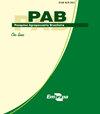覆盖有潜力减少大豆双斑蜘蛛螨种群的植物
IF 0.7
4区 农林科学
Q3 AGRICULTURE, MULTIDISCIPLINARY
引用次数: 0
摘要
摘要本研究旨在评价覆盖植物对大豆双斑蜘蛛螨种群的抑制作用。研究了棉花(Gossypium hirsutum)、ruziziensis、crotalaria juncea (crotalaria juncea)、玉米(Zea mays)、萝卜(Raphanus sativus)、大豆(Glycine max)和高粱(sorghum bicolor)等7种寄主植物对荨麻粉虱生物学参数(产卵、发育阶段和存活)和对挥发性气味的偏好(使用y管嗅觉仪)的影响。荨麻叶螨偏爱棉花,在棉花上表现出较高的种群增长率。在萝卜和甘蓝植株上,荨麻疹夜蛾的存活和产卵时间较长,而幼虫在紫荆叶片上发育不完全。红萝卜挥发性气味与红萝卜挥发性气味没有明显的差异。褐藻可减少大豆植株上的荨麻疹菌种群。本文章由计算机程序翻译,如有差异,请以英文原文为准。
Cover plants with potential to reduce two-spotted spider mite population in soybean
Abstract The objective of this work was to evaluate the potential of cover plants in reducing the population of the two-spotted spider mite, Te t r a n y c h u s urticae, in soybean. Seven host plants – cotton (Gossypium hirsutum), Urochloa ruziziensis, crotalaria (Crotalaria juncea), corn (Zea mays), radish (Raphanus sativus), soybean (Glycine max), and sorghum (Sorghum bicolor) – were evaluated for their effect on T. urticae biological parameters (oviposition, development stages, and survival) and preference for volatile odors (using a Y-tube olfactometer). Tetranychus urticae preferred cotton and showed a higher population growth rate on this host plant. The survival and oviposition of T. urticae was prolonged in radish and crotalaria plants, whereas juveniles did not complete their immature development on U. ruziziensis leaves. No preference was observed between the volatile odors of U. ruziziensis, radish, and crotalaria. Urochloa ruziziensis can reduce T. urticae populations in soybean plants.
求助全文
通过发布文献求助,成功后即可免费获取论文全文。
去求助
来源期刊

Pesquisa Agropecuaria Brasileira
农林科学-农业综合
CiteScore
1.20
自引率
0.00%
发文量
45
审稿时长
9-18 weeks
期刊介绍:
Pesquisa Agropecuária Brasileira – PAB – is issued monthly by Empresa Brasileira de Pesquisa Agropecuária – EMBRAPA, affiliated to Ministry of Agriculture, Livestock and Food Supply. PAB publishes original scientific-technological articles on Plant Physiology, Plant Pathology, Crop Science, Genetics, Soil Science, Food Technology and Animal Science.
Its abbreviated title is Pesq. agropec. bras., and it should be used in bibliographies, footnotes, references and bibliographic strips.
 求助内容:
求助内容: 应助结果提醒方式:
应助结果提醒方式:


